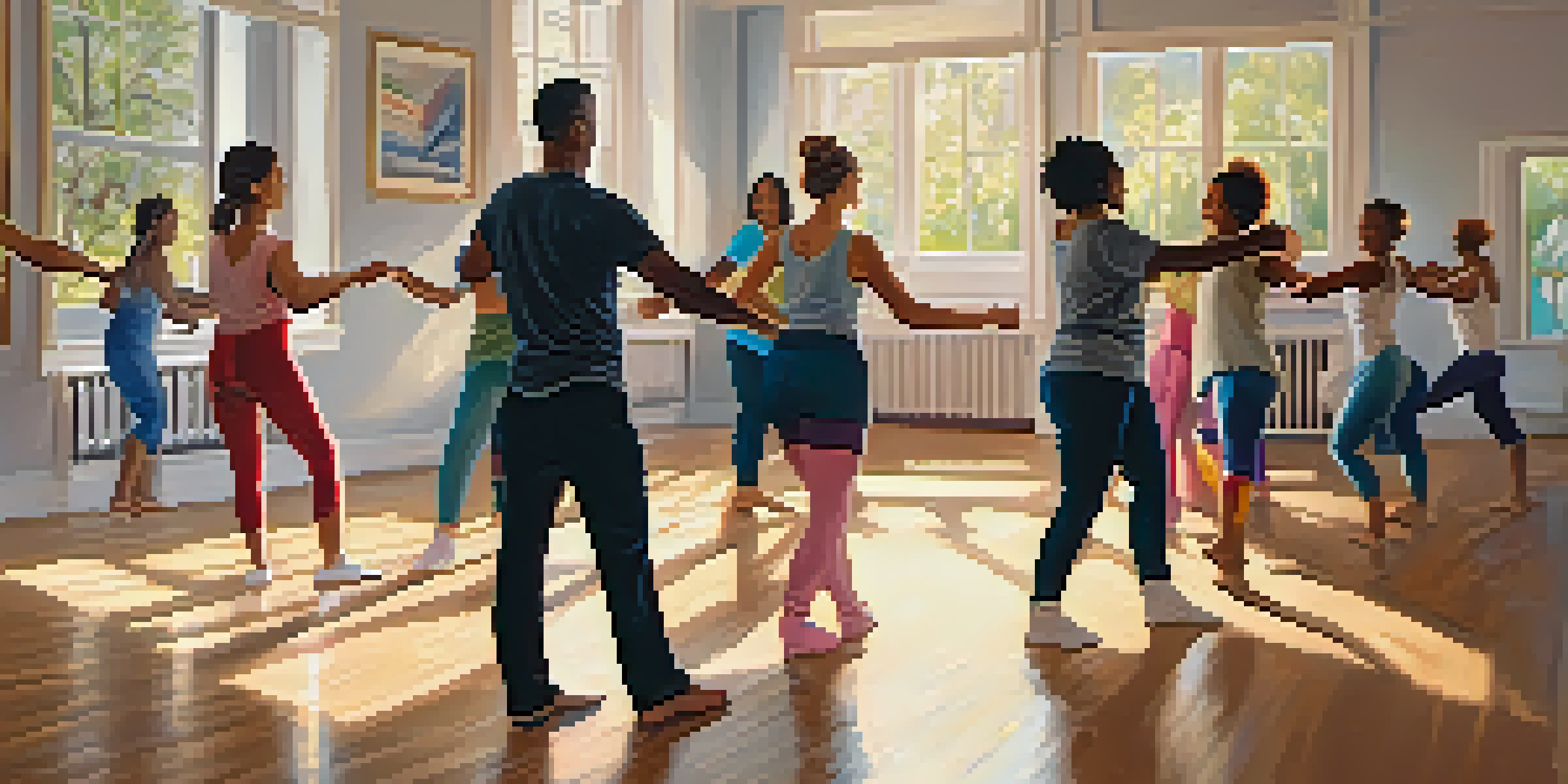The Therapeutic Effects of Dance for Anxiety and Depression Relief

Understanding Anxiety and Depression: A Brief Overview
Anxiety and depression are common mental health issues affecting millions worldwide. They can lead to feelings of hopelessness, restlessness, and an overwhelming sense of dread. Understanding these conditions is the first step towards finding effective relief methods.
Dance is the hidden language of the soul.
Both anxiety and depression can manifest physically, impacting our energy levels and motivation. This physical aspect makes it crucial to explore holistic approaches that engage the body and mind. One such approach that has gained popularity is dance therapy, which combines movement with emotional expression.
By recognizing the symptoms and effects of anxiety and depression, we can appreciate how dance can serve as a therapeutic outlet. For many, moving to music can provide a sense of freedom and release, turning the focus away from mental turmoil towards joyful self-expression.
Dance as a Form of Expression and Release
Dance allows individuals to express emotions that are often difficult to articulate in words. When words fail, movement can provide a powerful alternative, helping to release pent-up feelings. This form of expression can be particularly beneficial for those struggling with anxiety and depression.

As you sway to the rhythm, your body communicates feelings of joy, sadness, or even frustration. This release can be cathartic, allowing one to process emotions in a safe and creative space. Think of it as a form of emotional detox, where each movement helps to shed negativity and stress.
Dance Promotes Emotional Release
Engaging in dance allows individuals to express emotions that are often difficult to articulate, serving as a cathartic release.
Moreover, dance encourages mindfulness, as individuals become more attuned to their bodies and present moment experiences. This connection to the body can help ground individuals, reducing feelings of anxiety that often stem from overthinking or ruminating on the past.
The Science Behind Dance and Mental Health
Research shows that physical activity, including dance, releases endorphins—the body's natural mood lifters. These chemicals can significantly improve mood and reduce feelings of anxiety and depression. Engaging in dance stimulates the brain, creating a positive feedback loop of joy and motivation.
Dancing is like dreaming with your feet.
Furthermore, studies have shown that dance therapy can lead to improvements in self-esteem and social skills. When participating in group dance activities, individuals often feel a sense of belonging and community, which can counteract feelings of isolation that accompany mental health struggles.
The combination of physical exertion and emotional expression creates a unique environment for healing. By engaging in dance, individuals not only improve their physical health but also enhance their mental well-being, making it a holistic approach to treatment.
Types of Dance Therapy for Anxiety and Depression
There are various forms of dance therapy, each offering unique benefits. For instance, contemporary dance emphasizes self-expression and creativity, allowing individuals to explore their emotions through movement. Meanwhile, structured dance forms like ballet or hip-hop can provide a sense of discipline and accomplishment.
Dance/movement therapy (DMT) is often facilitated by trained professionals who guide participants through expressive movements tailored to their needs. This professional guidance can help individuals navigate their emotions and develop coping strategies, making the therapeutic process more effective.
Physical Activity Boosts Mood
Dance stimulates the release of endorphins, significantly improving mood and reducing anxiety and depression.
Additionally, social dance activities, such as salsa or ballroom dancing, can foster connection and community. These group settings can significantly alleviate feelings of loneliness while providing a fun way to engage in physical activity.
Creating Your Own Dance Therapy Practice at Home
You don’t need to be a professional dancer to reap the benefits of dance for mental health. Creating a simple dance practice at home can be as easy as putting on your favorite playlist and letting your body move freely. No rules, no steps—just pure joy and expression.
Start by setting aside time each week to dance. Whether it's a solo session or inviting friends to join, the key is to immerse yourself in the experience. Feel the rhythm and let it guide your movements, focusing on how your body feels rather than how it looks.
Incorporating mindfulness into your dance practice can enhance the experience. Pay attention to your breath and the sensations in your body, allowing yourself to be fully present in the moment. This approach can help distract from anxious thoughts and promote a sense of calm.
Dance in Community: Joining Classes and Groups
Joining a dance class or group can amplify the positive effects of dance on mental health. In these settings, individuals can connect with like-minded people, fostering a sense of community that can be incredibly supportive. The shared experience of dancing can create lasting friendships and reduce feelings of isolation.
Many communities offer various dance classes, from Zumba to contemporary dance, catering to different skill levels. Participating in structured classes can provide motivation and a sense of accomplishment, which is beneficial for those experiencing depression.
Community Classes Foster Connection
Joining dance groups not only enhances social skills but also combats feelings of isolation, creating a supportive community.
Moreover, group classes often incorporate a social element, allowing participants to engage with one another. This interaction can improve social skills and build confidence, further supporting mental well-being.
Conclusion: The Transformative Power of Dance
In conclusion, dance serves as a powerful tool for combating anxiety and depression. Its ability to promote emotional expression, foster community, and enhance physical well-being makes it an invaluable resource for mental health. Whether through structured therapy or casual movement at home, the benefits are undeniable.
As we’ve explored, the science behind dance supports its therapeutic effects, offering a holistic approach to mental well-being. By embracing dance, individuals can find joy, release, and connection—essential elements for healing.

So, why not take the first step? Put on some music, move your body, and let the rhythm guide you toward a brighter, more liberated state of mind. Dance is more than just movement; it’s a pathway to healing.